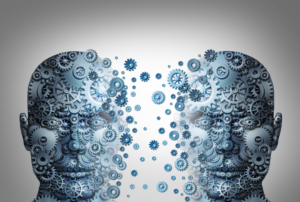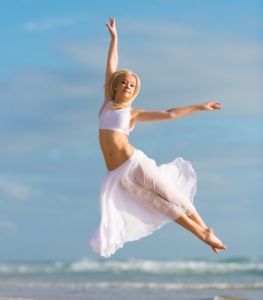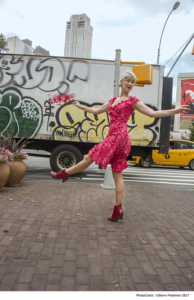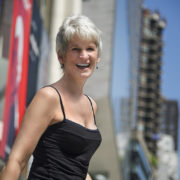BodyLogos Blog
Welcome to the BodyLogos blog. Here’s where you’ll get your dose of alignment and balance with grace. (Sign up here to join 1,000 other blog subscribers.)
Redefining Strength
I want to change our perception of strength. Strength is the ability to meet resistance and influence an outcome without compromising ourselves. And we already have it.
Strength is not an attribute; it’s a state of being. Gladiators, bodybuilders, and football players demonstrate strength through brute force, sheer willpower, muscle mass, and relentless pursuit. But we’re also quick to identify dancers and martial artists as strong. Their medium taps into a sense of vulnerability, balance, alignment, controlled power, and grace—but no one can deny their strength. Strength may look different on each of us, but it is an inherent part of who we are.
You are not weak by nature; you are stronger than you think. Your strength is not something you need to kill yourself to gain—it is already within you, waiting to be excavated. The key is to stop chasing something you already have and tap into it, so you can manifest that strength in your everyday life.
Because we don’t think we’re strong, we approach resistance with the idea that we’re not enough. We throw everything we have at it and push past our physical, mental, and emotional limitations. We see strength as domination, but it’s not.
When you learn to listen to your body’s divine wisdom, you cultivate a sense of where your body is developing tension instead of standing in its strength. You end the vicious cycle of unrealistic expectations, injury, and self-criticism and learn how to consciously embrace responsible growth. You stop compartmentalizing your strength into emotional, physical, and mental pieces and operate from the strength of your being at all times.
You learn how to align yourself with gravity—instead of working against it—so you can channel your strength to meet life’s resistance. As you meet resistance with equal parts power and alignment, you transform tension into strength
As in the sword dance above, the power lies in bringing just the right amount of force—not too little and not too much. By meeting the sword’s weight, I meet gravity. I am tapped into a larger source of energy, free of tension, and discover a strength that is wholly and uniquely mine.





 About Tammy Wise
About Tammy Wise
Take Command of Your Vitality: Part 2 of The Art of Strength: Bringing the BodyLogos Philosophy Into the Gym
by Tammy WiseThe BodyLogos Philosophy: Now In Book/Video Form!
Whether you’re a visual, aural or verbal learner, you’ll discover how to
release tension and build strength.
Order your copy of The Art of Strength: Sculpt the Body ~ Train the Mind, a pioneering book/3D video learning system today!
Take Command of Your Vitality:
Part 2 of The Art of Strength: Bringing the BodyLogos Philosophy Into the Gym
“Get More Energy Now!”
“Boost Your Energy Levels Instantly!”
There’s no shortage of online articles with headlines that promise to put more pep in your step. I actually share their agenda: I want you to have more energy. But, I want you to have more than just enough energy to get through the work day, or the hustle of kids’ schedules, or the mountain of life’s other demands.
I want to help you restore your Energy System—to recover your energy’s quality—in turn helping you reduce stagnant tension, increase energy flow, center you in your Spirit Self and, of course, develop muscular strength too. Then, you will be able to take on the day and your life, to create the person you want to be in and the world you want to live in.
That’s what Part 2 of The Art of Strength: Sculpt the Body ~ Train the Mind is all about, and what it offers is well beyond the tips you’ll find in a quick Google search. You see, energy is so much more than the external momentum that powers you from sunup to sundown. It’s more than what powers you physically through workouts and mentally through problem solving. Energy’s subtle force aligns the power within you with the power of this great big universe.
How BodyLogos Differs From Traditional Strength Training
External momentum places your attention on the destination of an effort, rather than in a movement’s energetic and muscular origins. This momentum throws the resistance away from you rather than connecting you to it. Compared to the internal momentum generated by Energy Orbits—which balance muscular contraction and release—external momentum is a more superficial and uneven focus on either muscular contraction or release. This is reckless in strength training.
BodyLogos is mindful strength training that helps you unite with resistance, whereas traditional methods strive to triumph over it. They leave no room to experience equipoise, or stillness in the middle of challenge.
In this way, traditional strength training is disconnected from life’s content and meaning—disconnected from having a tangible impact upon our existence. This kind of sterile effort can become mechanical, done by route and without truly engaging the senses or the intellect. By connecting strength training to our ability to balance relaxation and hard work, we bring strength into the very center of our existence. It becomes what we are, rather than what we are chasing after.
As I see it, strength is a combination of letting-go of and holding on to our connections with life. It’s not about the amount of weight you lift—it’s about how you connect with that weight.
Part 2 of The Art of Strength gets you working out according to the principles of the BodyLogos Philosophy discussed in Chapters 1-6. Discover:
The book gives you exclusive access to videos that help visually guide you through these exercises.
Together, we’ll take a deep look at the Five Energy Patterns (that reflect eight Energy Orbits): Coming Home, Determined Power, Creating Forward, Suspending Judgment, and Universal Connection. Then, we’ll focus on the body’s muscle groups—abdominals, chest, upper-back, shoulders, biceps, triceps, quadriceps, hamstrings, inner thighs, calves and buttocks—exploring the independent character and nature of each muscle group through the 5 Element Theory (the cyclical flow of energy I’ve been writing about!). And, finally, we’ll learn to integrate energy flow into traditional strength-training exercises.
Our power to create the life we dream about, physically and mentally, is in the subtle projection of our Life Force. Remaining conscious of the pattern of energy that exists in all movement, physically and mentally, assures our position on the planet and gives us a sense of belonging. The greater our command is of these forces at work, the greater our command is in creating our life. How we carry ourselves energetically affects how we feel about ourselves and how the world feels about us.
Get your copy of The Art of Strength: Sculpt the Body ~ Train the Mind today!
Balboa Publishing
with a 5% gift to Safe Horizons
Amazon